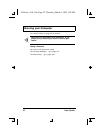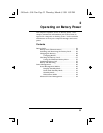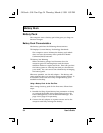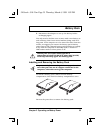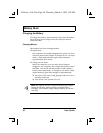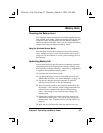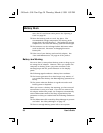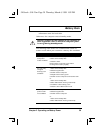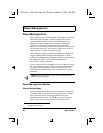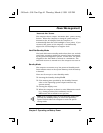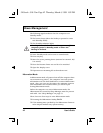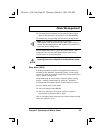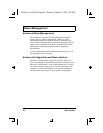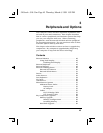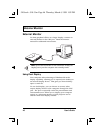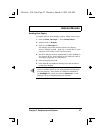
Power Management
40 User’s Guide
Power Management
This computer has a built-in power management unit that
monitors system activity. System activity refers to any
activity involving one or more of the following devices:
keyboard, mouse, floppy drive, hard disk, peripherals
connected to the serial and parallel ports, and video
memory. If no activity is detected for a period of time (called
an inactivity time-out), the computer stops some or all of
these devices in order to conserve energy.
This computer employs a power management scheme that
supports APM (Advanced Power Management) or ACPI
1
(Advanced Configuration and Power Interface) which allows
for maximum power conservation and maximum
performance at the same time.
If your computer is set for APM, you can set timeout values
for your computer’s devices before power-saving methods
are applied to these devices. If your computer is set for
ACPI, Windows handles all power-saving chores for your
computer.
Power Management Modes
Display Standby Mode
Screen activity is determined by the keyboard, the built-in
touchpad, and an external PS/2 pointing device. If these
devices are idle for the period specified by the LCD
backlight Timeout value, the display shuts off until you
press a key or move the touchpad or external mouse.
1
Available in the future.
Note: We recommend you enable power management to
prolong your battery life.
510.book : 510-2.fm Page 40 Thursday, March 4, 1999 1:03 PM



